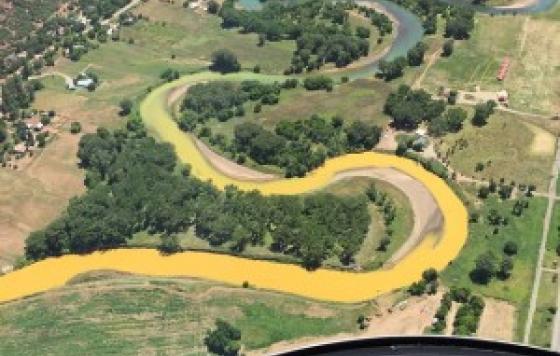By John Noël, National Oil & Gas Campaigns Coordinator - Follow John on Twitter (@Noel_Johnny)
It bears repeating: EPA’s just released Assessment on the Potential Impacts of Hydraulic Fracturing for Oil and Gas on Drinking Water Resources smashes the myth that there can be oil and gas development without impacts to drinking water. We know that fracking is a complex process that poses a complex array of potential risks to drinking water. The Assessment informs actions we need to take to protect drinking water and public health by outlining the numerous vulnerabilities throughout the fracking water lifecycle.
However, google “EPA fracking study” and you’ll find a huge list of news articles with headlines like “Fracking does not contaminate drinking water” or “EPA fracking report hailed as victory for oil and gas drillers.” How can the news reporting on EPA’s Assessment be this misleading?
At least part of the reason is EPA's press release. The Agency decided to keep handling the oil and gas industry with kid gloves. It led with the headline, literally in bold and large font, “Assessment shows hydraulic fracturing activities have not led to widespread, systemic impacts to drinking water resources and identifies important vulnerabilities to drinking water resources.”
The Agency just spent 5-years gathering data, doing primary research and released a report which includes evidence of multiple areas of confirmed contamination from fracking and other inconvenient passages for oil and gas companies. That is huge news. But the Agency oddly packaged it in a way that downplays the findings in an effort to not tag industry too hard.
The purpose of the study, stated in the 2011 Study Plan, was to “assess the potential impacts of hydraulic fracturing on drinking water resources” and “identify the driving factors that might lead to the severity and frequency of such potential impacts.”
Why not lead the press statement with the findings relevant to these two objectives?
What is confusing to the public and everyone watching this closely is that the Assessment does report on actual impacts to drinking water from fracking activities, and then goes further to identify multiple vulnerabilities that could impact the severity and frequency of future impacts.
The Assessment reports that, essentially, the entire fracking water cycle is vulnerable to contamination. Everything thing from how and where the companies acquire millions of gallons of water needed, to where the fluid is injected underground at high pressures, all the way through the consequences to water quality via inadequately treated wastewater.
Was anyone saying that fracking impacts on drinking water were systemic? When researchers conduct a study on the impacts of urban violence, do we care if there is violence in the city or if that violence is systemic or not? No, we care that violence is occurring. And we should care if fracking is putting our drinking water at risk.
As frustrating as seeing EPA bury the lede, what might be worse is in the media deciding to not spend much time telling the public that EPA was missing essential data. EPA didn’t have access to the data necessary to come to such broad conclusions of whether there are “widespread” impacts or not. This includes that fact that industry intentionally did not cooperate on case studies of their full operations, and that there was a lack of data in certain cases all together, just to list a few examples;
… insufficient pre- and post-fracturing data on the quality of drinking water resources; the paucity of long-term systematic studies; the presence of other sources of contamination precluding a definitive link between hydraulic fracturing activities and an impact; and the inaccessibility of some information on hydraulic fracturing activities and potential impacts,
AND
There are other cases in which production wells associated with hydraulic fracturing are alleged to have caused drinking water contamination. Data limitations in most of those cases (including the unavailability of information in litigation settlements resulting in sealed documents) make it impossible to definitively assess whether or not hydraulic fracturing was a cause of the contamination in these cases. Chp 6-53
Without widespread access to industry operations and data – there can be no widespread determination on the impacts of fracking.
My lingering questions as the dust settles; how much of the way the assessment’s findings are portrayed are a consequence of the EPA being leaned by forces outside of the Agency not to call out the oil and gas industry on the full extent of the their impacts? Or is the Agency just trying to stay out of the spotlight and release a congressionally requested report without ruffling any feathers?
Related Posts
Stay Informed
Get the latest updates and actions:
Thanks for signing up!
There was a problem processing your signup. Please try again.


